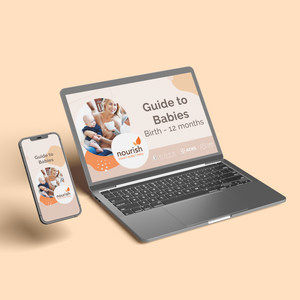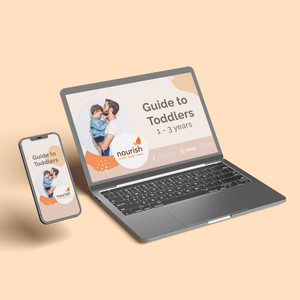At some stage in late pregnancy most women long to find a comfortable position, at any time of the day or night. As their baby grows and nears term, the mother’s own organs and tissues need to compete for space. There’s a limit to how much room can be shared in one belly.
Thanks to research, we now understand a lot more about the importance of sleep positions for mothers in late pregnancy. And although maternal comfort is still important, the baby’s health also needs to be prioritised.
Sleep on your side from 28 weeks of pregnancy until your baby is born.
Why should I sleep on my side?
When you lie on your back, or in a supine position, the weight of your uterus will put pressure on your major blood vessels. This will restrict the flow of blood and oxygen to your uterus and your baby. Supine sleeping can also increase the risk of stillbirth.
Stillbirth is a devastating outcome, affecting around 1 in every 500 pregnancies after 28 weeks. By sleeping on their side from 28 weeks of pregnancy right up to their baby’s birth, women can halve the risk of stillbirth compared to sleeping on their back.
Side sleeping is known as a ‘modifiable risk factor’. That means it’s something which mothers can do to reduce the risk.
Some studies have found that back sleeping for pregnant women can also lead to a reduction in foetal movements.
Which side?
Either side is thought to be fine – it’s equally safe to sleep on the right or left side. You may find one side is more comfortable than the other.
How do I need to sleep in late pregnancy?
Sleep on your side from 28 weeks of pregnancy until your baby is born. Side sleeping is the safest way for you to sleep. Even if you’re having a quick rest or nap, side sleeping is best.
But it’s not comfortable sleeping on my side
Use pillows to get comfortable. Experiment with different types of wedges/pillows until you find a combination which suits you best.
Start as you mean to continue. From when your pregnancy is confirmed, practice sleeping on your side. You will soon get used to it.
Try placing a pillow under your belly. As your belly grows bigger, you’ll find a supportive pillow helps to take the weight off your back.
Bend your knees and place a pillow between your legs. You may be more comfortable if you use two pillows to sleep on. Sleeping at a higher angle sometimes helps with heartburn and indigestion. But if you're still unsure, our Pregnancy Guide covers everything from conception to birth.
But when I wake up, I’m always on my back!
Don’t stress if you’re on your back when you wake during the night. Just re-position yourself on your side.
- Start the night off correctly by lying on your side. This is the position you’ll hold for the longest period overnight.
- If you wake during the night to go to the toilet, always position yourself on your side when you go back to bed.
- Ask your partner to gently roll you onto your side if they see you sleeping on your back.
- Place a pillow behind your back so it’s not so easy for you to roll over in your sleep.
- Start every sleep on your side, whether it’s a daytime nap or when going to sleep at night.
- Be patient as you learn to get used to side sleeping. All of us have our favourite way to sleep and making changes can be difficult. Side sleeping can reduce the risk of stillbirth by up to 50%, so it’s worth doing.
Where can I find more information about side sleeping?
- https://www.stillbirthcre.org.au/safer-baby-bundle/improving-awareness-of-maternal-safe-going-to-sleep-position-in-late-pregnancy/
- https://www.health.nsw.gov.au/news/Pages/20191015_00.aspx
- https://sanda.psanz.com.au/assets/Uploads/Position-Statement-Side-Sleeping.pdf
Written for Nourish Baby by Jane Barry Midwife and Child Health nurse. All of our online antenatal courses are vetted and held to the highest and most accurate standard of information for this industry.
Our Products
-

01. Guide to a Healthy Pregnancy
$55 -

02. Positive Birthing Course
$55 -

03. Infant Feeding Guide
$55 -

04. Baby Sleep Guide - First 12 Months
$55 -

05. Toddler Parenting Course 1 - 3 Years
$55
-
 When to Start Antenatal Classes?
When to Start Antenatal Classes?
Becoming a parent is an incredible milestone, but it comes with a host of changes that can be daunting, especially for first time parents. Antenatal classes are all about offering expectant parents the education they need to make informed decisions, look after their bodies and care for their newborn babies. While you probably already have a long list of things you need to accomplish during your pregnancy, it’s a good idea to make time to attend antenatal classes.
-
 Development Milestones 4-8 Months
Development Milestones 4-8 Months
As they reach the middle of their first year, you'll start to see bigger leaps in their growth and ability!
In this article, we’re going to discuss your baby’s developmental milestones between 4-8 months, and what you can expect along the way.





 When to Start Antenatal Classes?
When to Start Antenatal Classes?
 Development Milestones 4-8 Months
Development Milestones 4-8 Months








